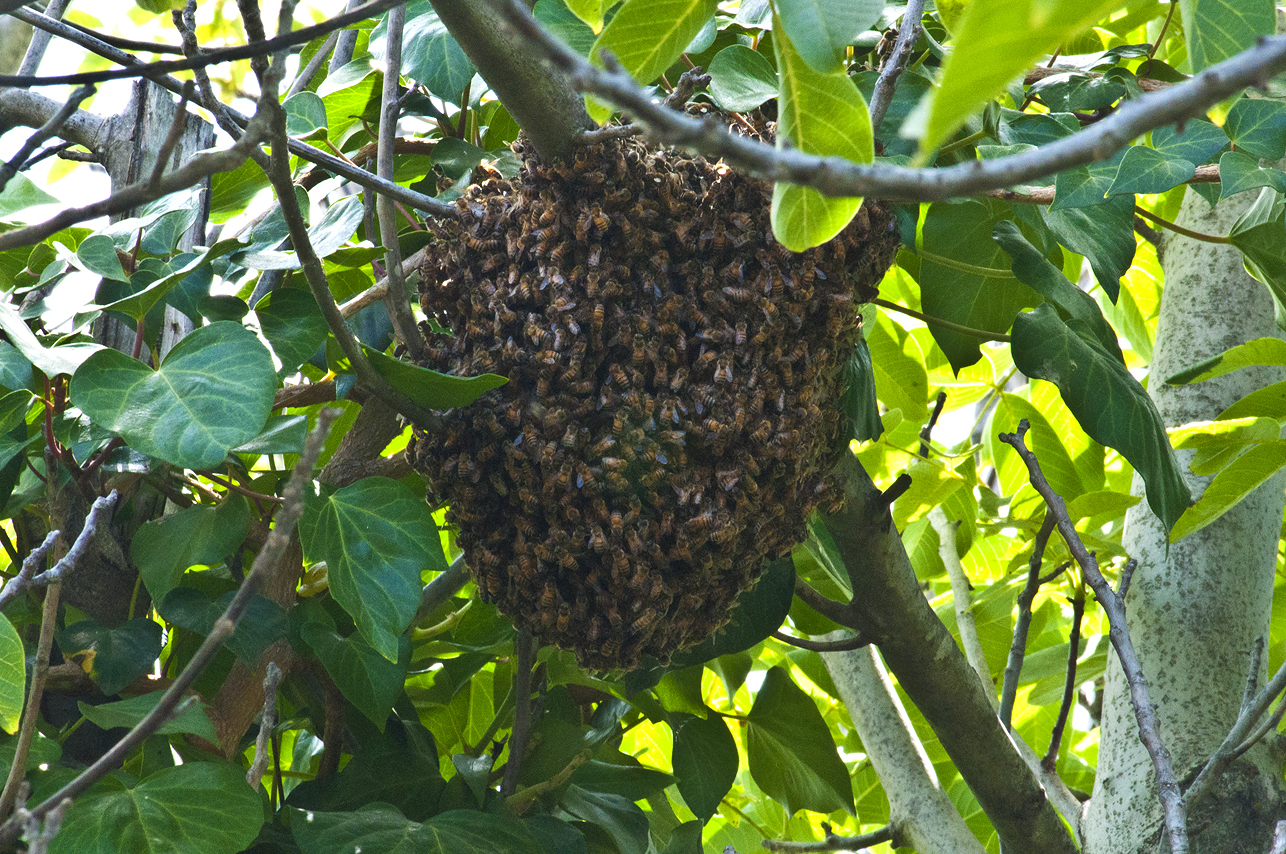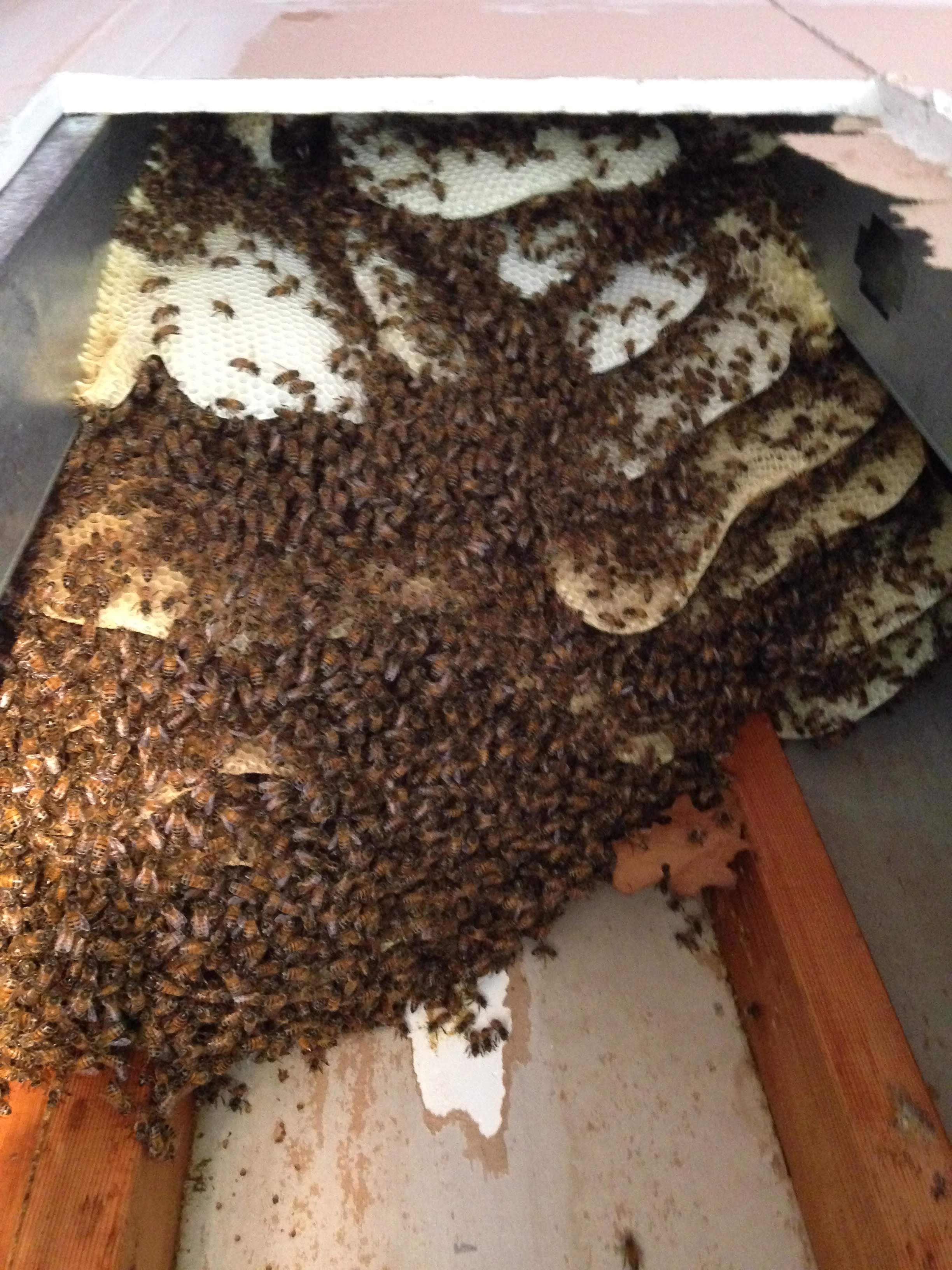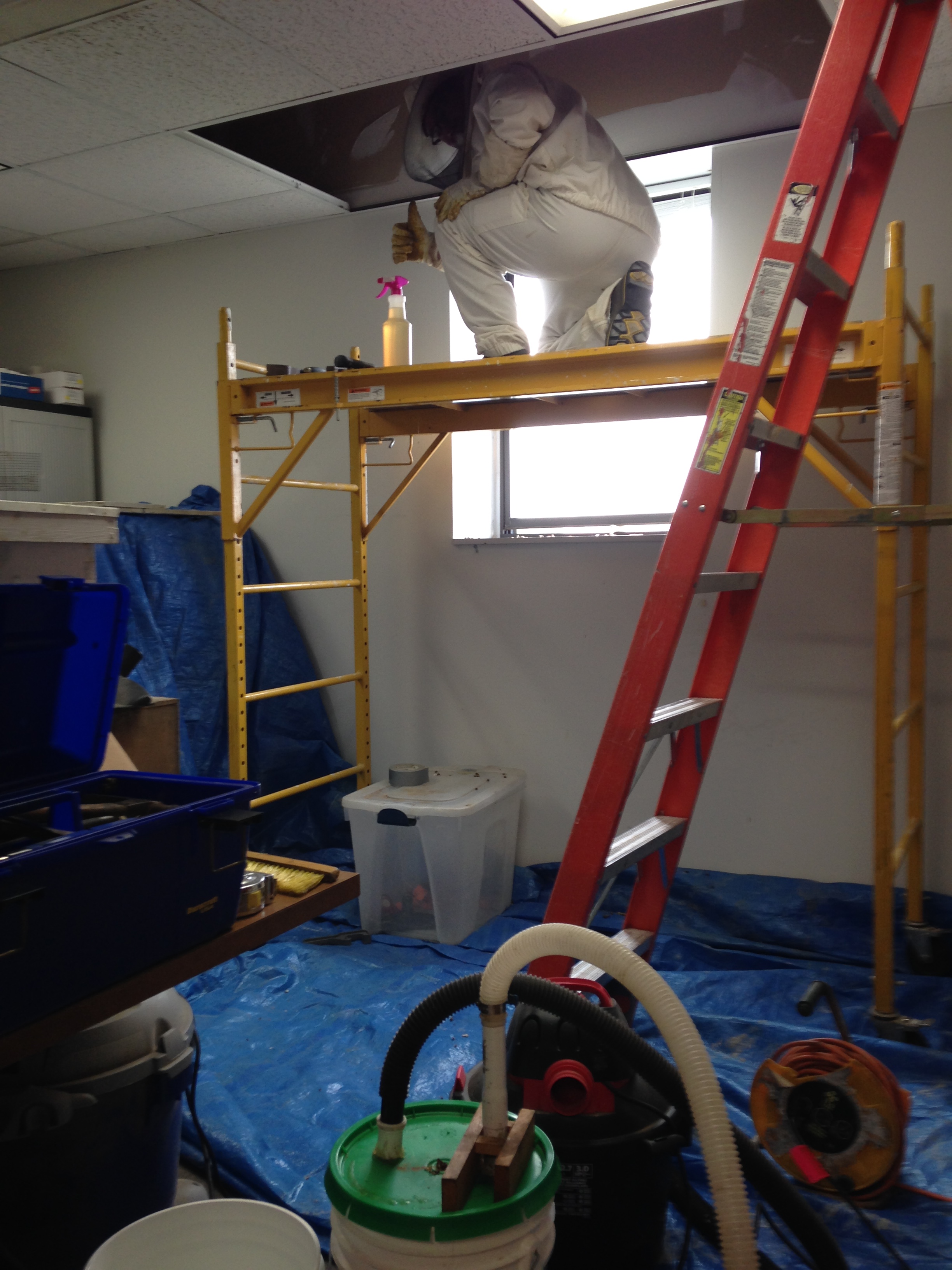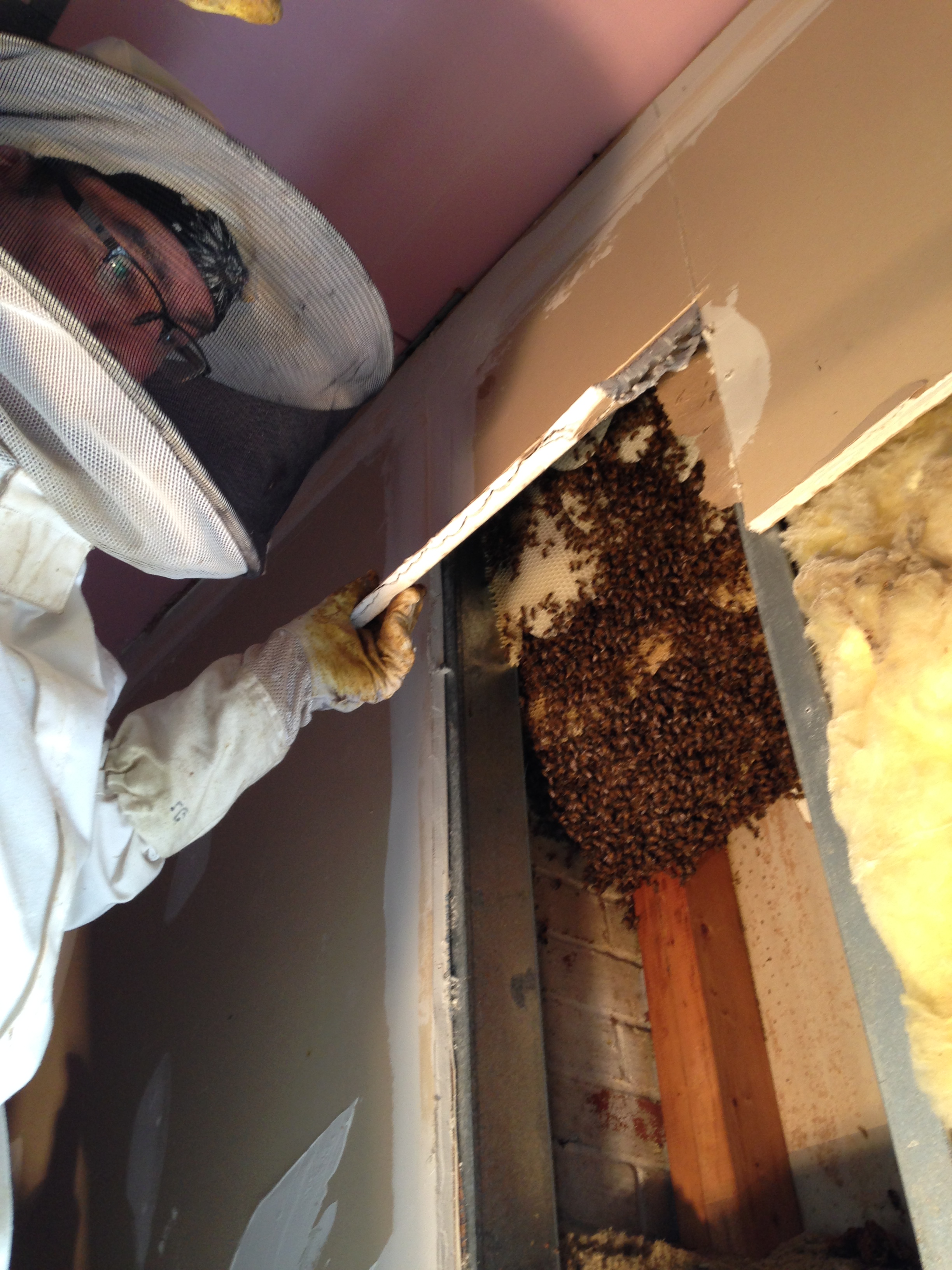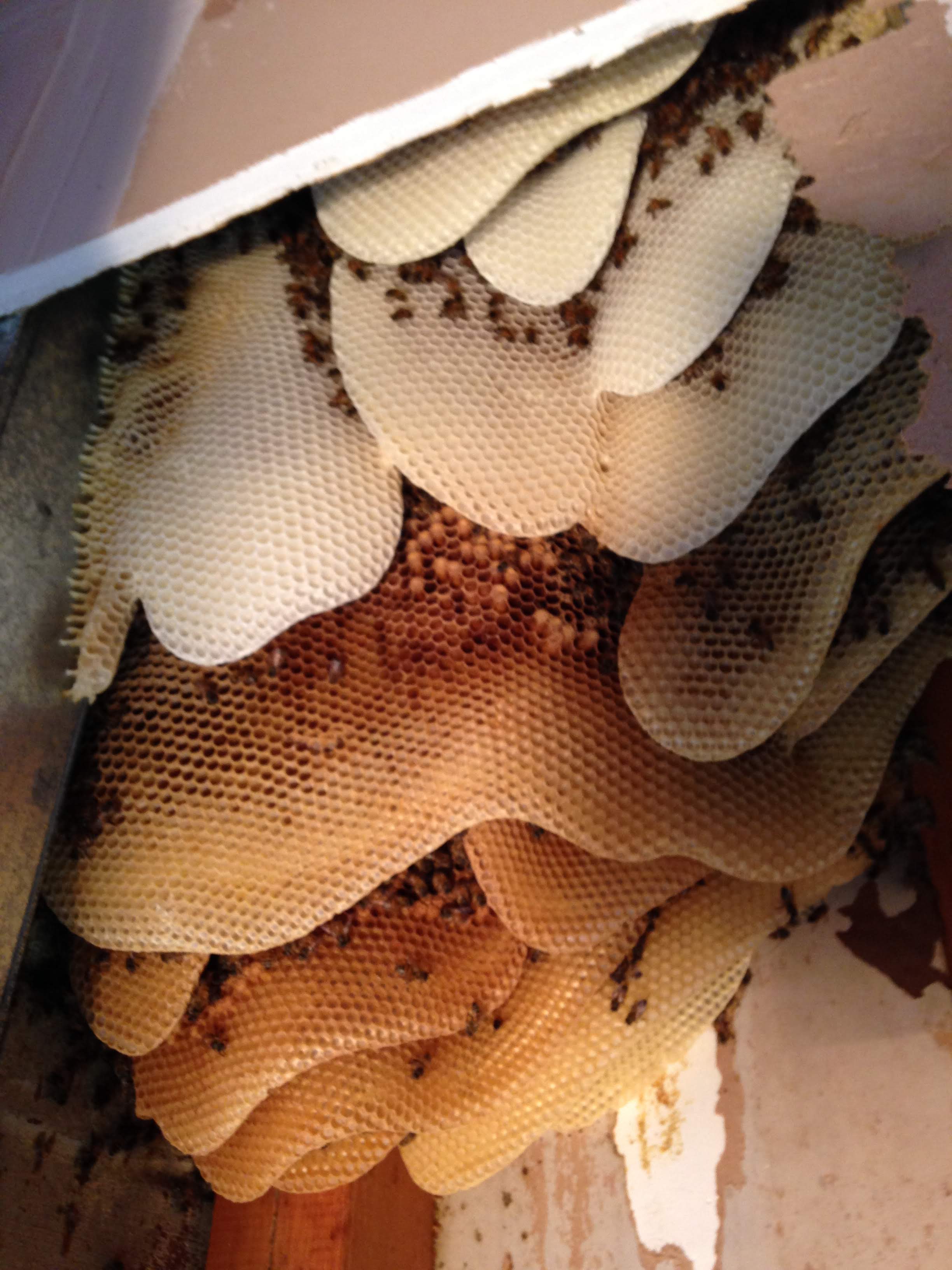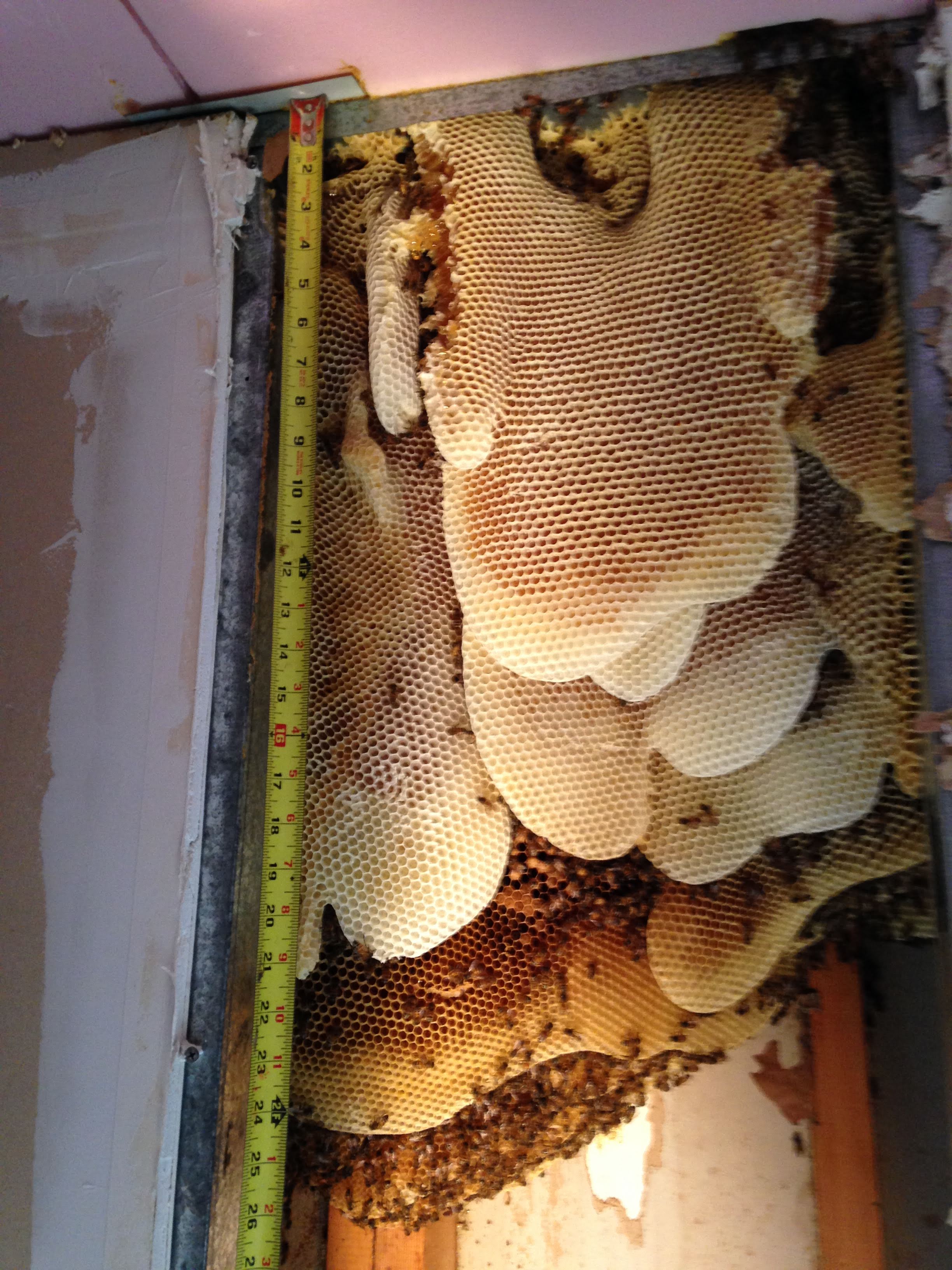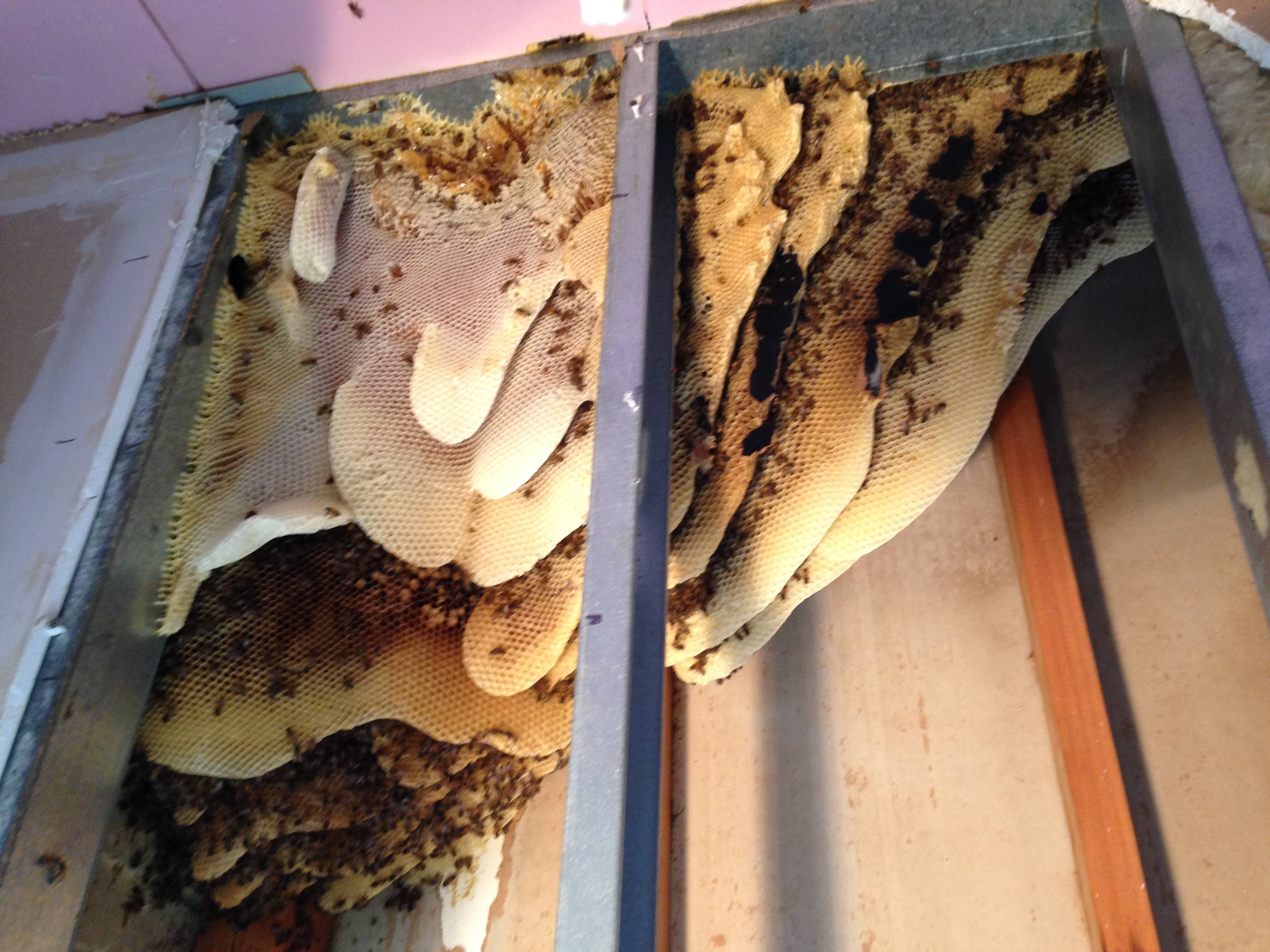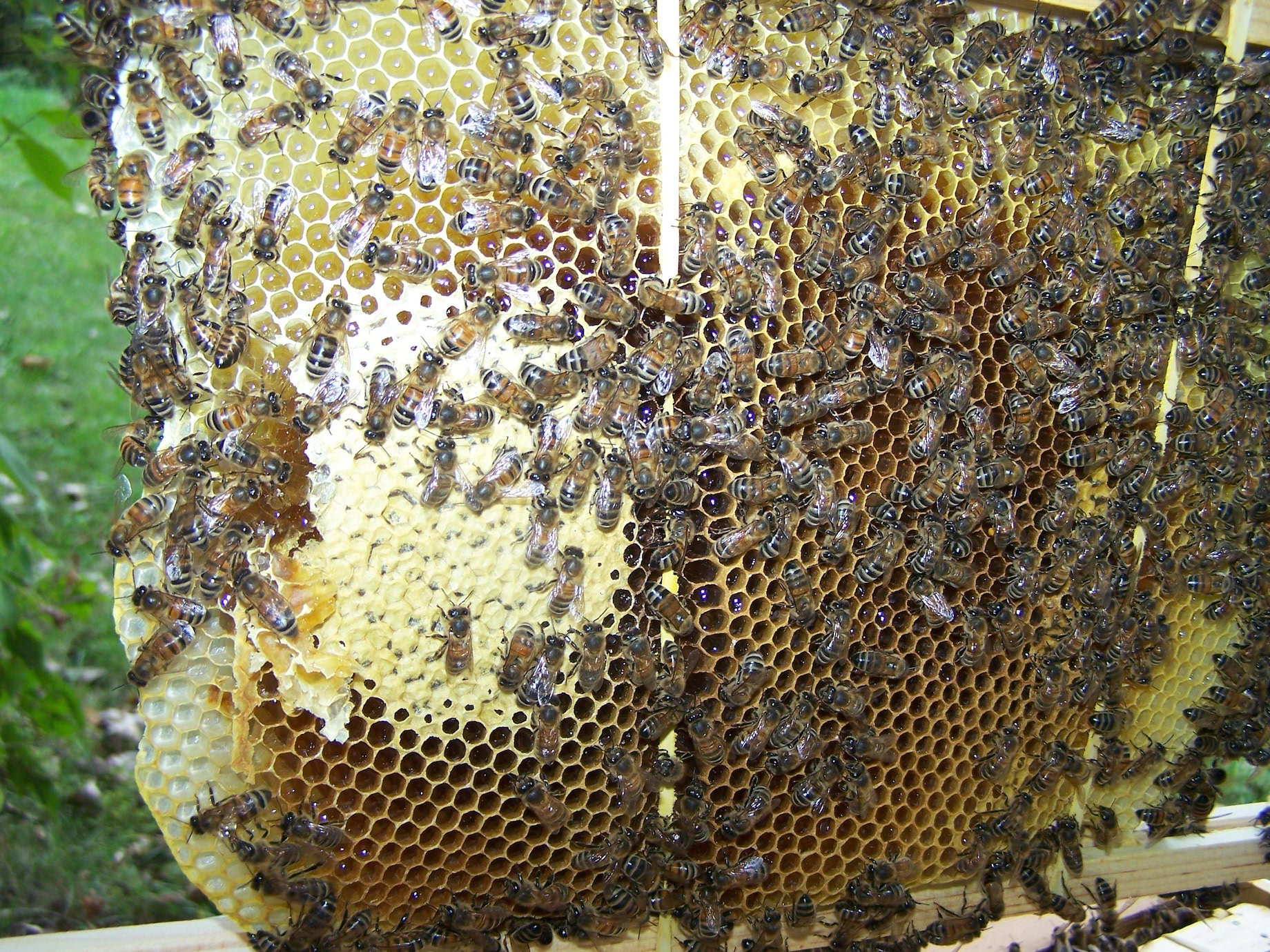A honey bee swarm is both a noun and a verb.
A swarm of honey bees is a large group or mass, clumped together outside of a hive.
When honey bees swarm, they are moving from one location to another.
So when a queen decides that it’s time to split her colony into two separate colonies because she either wants to expand her lineage or possibly because the hive is becoming just too crowded, she will communicate her intent to her workers. Naturally, some of the workers secrete a rich substance called royal jelly to place into several cells. This royal jelly is a highly nutritious cream and they know when and how to produce the perfect amount to insure that a select amount of eggs needed, will hatch into healthy larvae and pupae worthy of becoming the colony’s new queen. Once these queen cells are developing and capped, arrangements have already begun for a swarm journey.
Usually about 3 days before the new queen is due to hatch, the queen and about half of the honey bees will begin “humming” and gathering out in front of the existing hive. They will begin flying in large circles. Eventually flying up and away from the hive, they are swarming. Usually they will land fairly close, in a tree or on a fence post or on whatever object they choose. This spot just becomes their resting place. While the queen and most of the bees are resting, she stays deep within the mass of honey bees to keep warm and protected. A handful of scout bees will venture out to look for a potential new hive location and then fly back to the swarm to communicate where that location is. Once a consensus is made that the new hive location will become the new home the resting period will end and the swarm will move to the new location and they will begin building their new colony.
Please do not harm these swarms.
There are plenty of Beekeepers who will safely remove honey bee swarms from your property. Most states and counties have Beekeepers nearby who can be contacted through local organizations, please do your best to contact someone that will relocate them to a safe location. Honey bees are some of the most prolific pollinators on earth. We depend immensely on all pollinators for the foods we eat and they deserve protection and care.
For swarms in the Quincy, Illinois and surrounding areas you may call:
Friends Hill Apiary at 217/257+2704 or 217/257+5061
